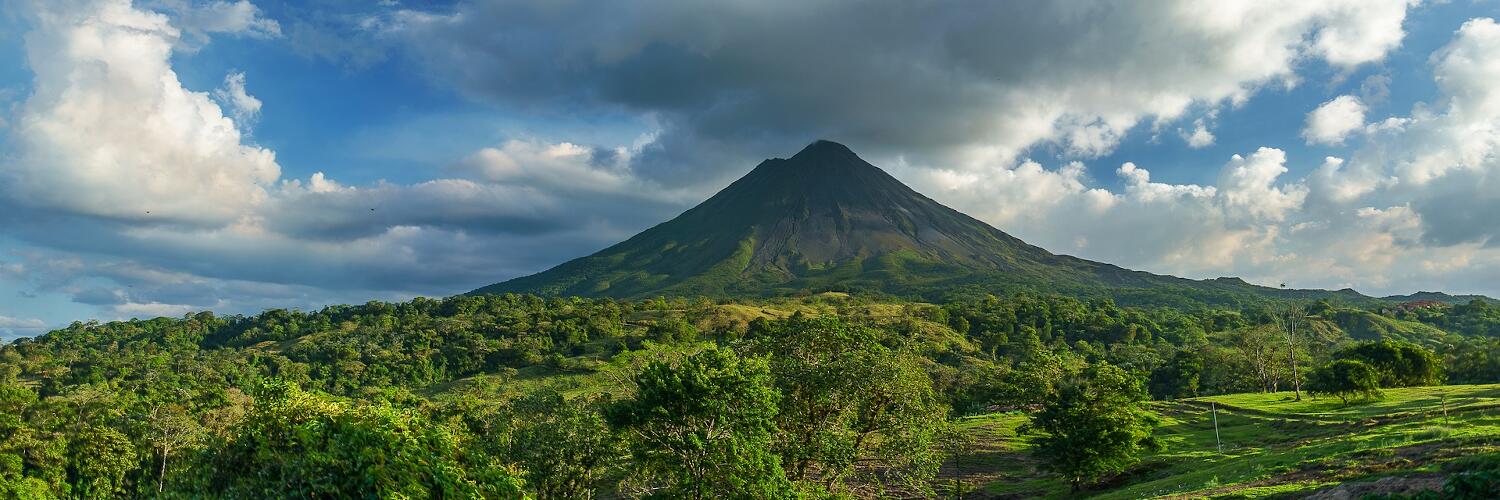
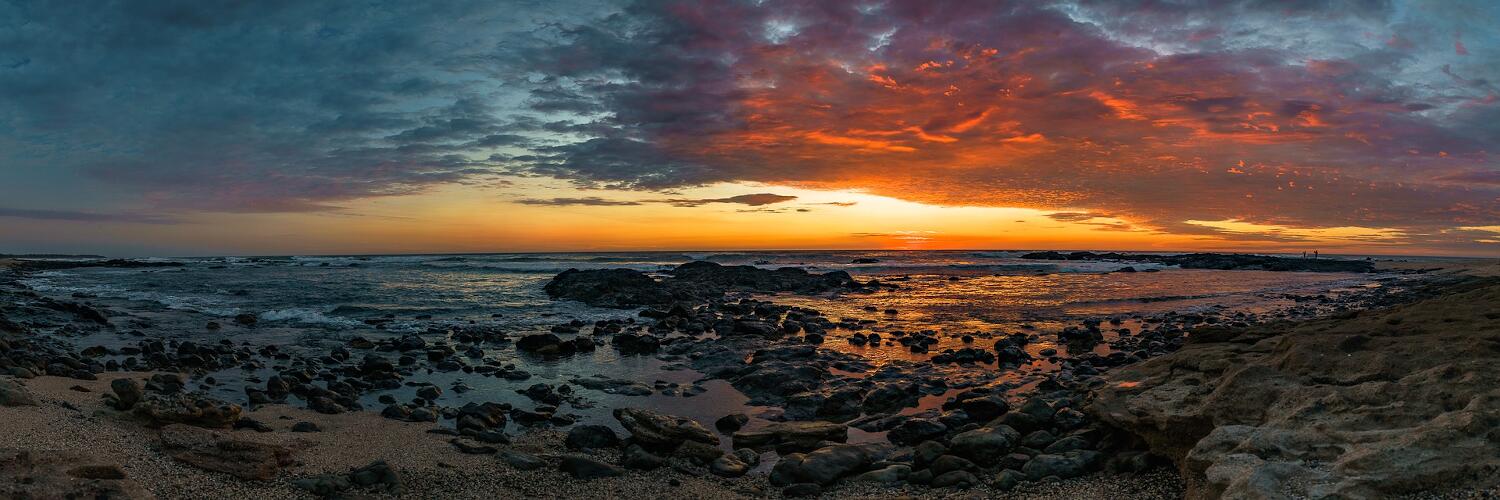
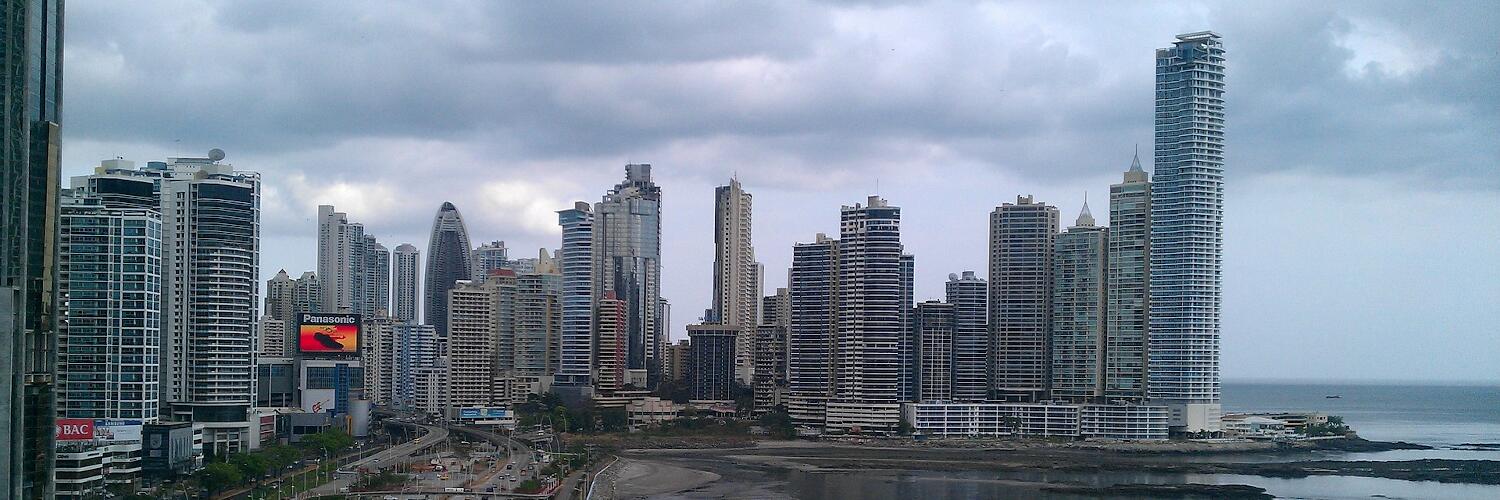
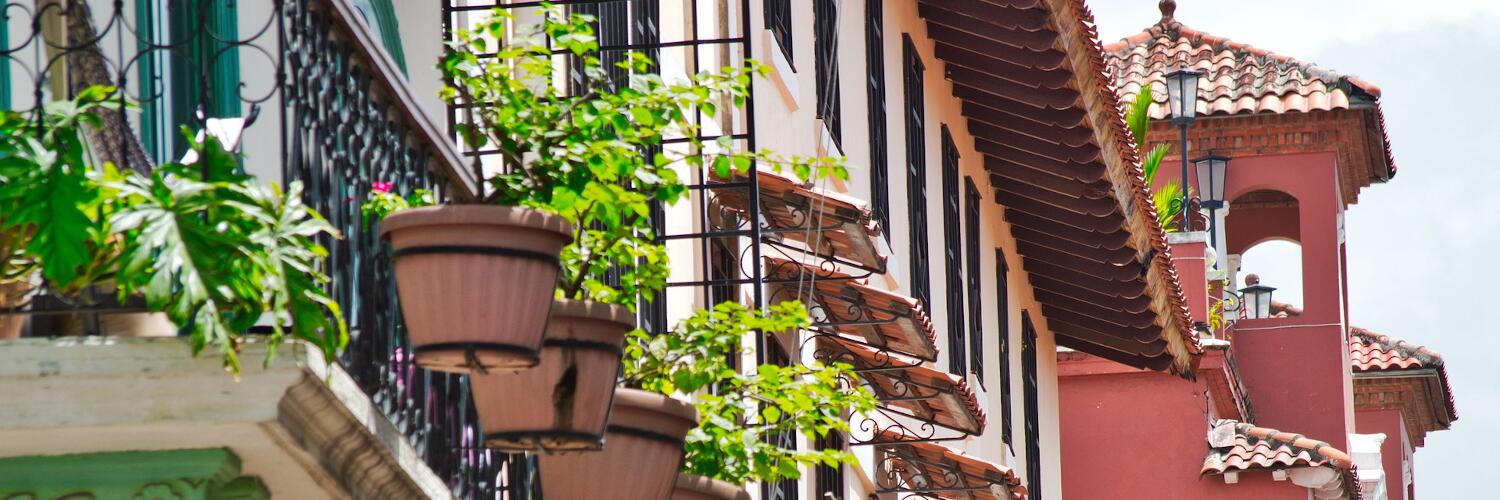
Immerse yourself in the remarkable coastlines of Costa Rica and Panama. Costa Rica (the ‘rich coast’) is one of the most biodiverse regions on earth. Discover tropical rainforests teeming with outstanding variety of wildlife, brilliant birds and flamboyant flora. In Panama, discover pristine coral reefs, meet the indigenous people of the Emberá Mogue community, and learn the remarkable history of the Panama Canal on a guaranteed daylight crossing from the Pacific Ocean to the Caribbean Sea. Concluding in Cartagena de Indias, Colombia, revel in the vibrant Afro-Caribbean culture and the fascinating and colourful historic centre—a UNESCO World-heritage site.
Having made your way to San Jose, you will transferred to our group hotel. Upon arrival, kindly remind hotel check-in staff to provide you with cabin tags for your luggage. Please clearly label the tags with your name and ship cabin number.
This evening, enjoy a light refreshment as you meet your fellow expeditioners at a Welcome Reception and Pre-Embarkation Briefing. Afterwards, there’s free time to dine at your leisure (Dinner not included).
Accommodation: DoubleTree by Hilton Hotel Cariari (or similar)
This morning, your luggage will be collected from the hotel and transferred directly to the port for sanitisation, clearance and delivered to your cabin ahead of your arrival on board. Final, mandatory pre-embarkation health screening and COVID (rapid antigen) testing will be completed before transferring to Puerto Caldera to embark the Greg Mortimer.
There is time to settle into your cabin before attending important safety briefings. Enjoy the thrill of departure as we ‘throw the lines’ and set sail for nearby Turtle Island.
Turtle Island offers the first opportunity for you to enjoy the clear, warm tropical waters of Costa Rica, where you can swim and snorkel, or perhaps stroll along the beach.
Boasting over 100 species of mammals, 184 species of birds and an impressive variety flora, Manuel Antonio National Park understandably attracts wildlife enthusiasts from all over the world. Costa Rica’s star attractions – two and three toed sloths, as well as white-faced monkeys, toucans, agoutis, armadillos and coatis are a few of the exciting animals that you may encounter within the park. There are a number of clearly marked hiking trails to choose from including a circular loop trail (1.4 kilometres/0.9 miles) that visits the highest point on the hike, Punta Catedral, which offers sweeping views of the bay below.
After exploring the park for its superb for wildlife, cool off with as swim at Espadilla Beach or Manuel Antonio Beach, located within the park. At nearby Biesanz Beach you can enjoy activities such as snorkelling and kayaking.
This evening, get to know your fellow expeditioners and your friendly expedition team at the Captain’s Welcome Dinner to celebrate the start of a thrilling adventure.
The untamed Osa Peninsula is considered by National Geographic to be ‘one of the most biologically intense places on earth’. Considered to be the crown jewel in the park system of Costa Rica, Corcovado National Park is the country’s largest and one of the most remote parks in Costa Rica. It is home to the largest and tropical primary lowland rainforest in the world and provides habitat for a plethora of endangered plant and animal species including the scarlet macaw, various frogs, and the tapir – the largest terrestrial mammal in Central and South America. We enjoy a hike along well-marked trails within the national park to not only search for wildlife but also to experience the incredible wet tropical rainforests containing tall trees measuring over 60 metres (197 feet), lianas, epiphytes, palms, gingers and orchids.
Golfo Dulce, or Sweet Gulf, is a large bay that hugs pristine beaches, rivers and tall evergreen forests – a protected area known as the Golfo Dulce Forest Reserve. As one of the wettest places on Earth with over 5,000 millimetres (200 inches) of rainfall per year, the Golfo Dulce Forest Reserve features some of the world’s tallest trees
The warm tropical waters in the gulf are a great place to enjoy aquatic activities, where spinner dolphins are often seen frolicking in the bay. There are ancient coral reefs to explore, where you can see enormous coral gardens and the creatures that inhabit them. On land, there are more pristine rainforest trails for you to explore, where you can marvel at the extraordinary flora and fauna that contributes to Costa Rica’s biodiversity.
In Golfo Dulce we exit Costa Rica and continue our journey as we sail to Panama.
We continue to Coiba Island, a National Park and a UNESCO World Heritage site, located off the southwest coast of Panama. The national park includes the main island of Coiba and 38 smaller islands in the surrounding marine areas within the Gulf of Chiriquí. Protected from the cold winds and the effects of El Niño, the Pacific tropical forest if Coiba Island features exceptionally high levels of endemic mammals, birds and plants. It is the last refuge for a number of threatened animals including the crested eagle.
On Coiba Island, we spend the morning in the area of Granito de Oro islet, a unique place that allows snorkellers to encounter a diversity and volume of marine life that is usually reserved for scuba divers. This is one of the world’s most sought-after diving destinations. The local ranger will provide guidance on the optimal places where we can enjoy water activities.
Note: Coiba Island is currently closed due to the Covid pandemic. However, advice from local authorities indicates that Coiba Island may be reopened to visitors by the time is scheduled to visit. If Coiba Island remains closed at the time of our proposed visit, we plan to visit nearby Parida Island located 40 nautical miles northwest of Coiba Island. Parida Island is one of the islands that belongs to the Chiriquí Gulf National Marine Park that is included in the Special Zone of Marine Protection under UNESCO World Heritage protection.
The Pearl Islands of Panama consisting of some 250 small islands and islets are located in the North Pacific Ocean in the Gulf of Panama. The Pearl Islands were originally named by the Spanish explorer Vasco Nuñez de Balboa for the bountiful pearls that were harvested off the islands’ shores. The Islands are renowned for their spectacular and tranquil white-sand beaches, pristine forests and colourful coral reefs, and at Bartolome Island, we enjoy water activities.
From 1919 to 2004, the penal colony on Coiba Islands was home to Panama’s most dangerous criminals and political prisoners. At the peak of its operations, the prison housed up to approximately 3,000 inmates in about 30 camps spread around the islands. We spend the morning on the hiking trails that lead to a number of waterfalls, hot springs. Remains of the prison, now roofless and rusted, can still be found at Damas Bay on the eastern side of the island. Back on board, enjoy lunch as we set towards the Pearl Islands.The Emberá are an indigenous tribe who live near the Panama-Columbia border. There are about 33,000 living in Darién, Panama, and 50,000 in Colombia, and the tribe have inhabited this region for centuries. On our visit to one of the Emberá villages near Panama City, you will be warmly welcomed by the local villagers and enjoy a presentation to learn about their history, culture and way of life. On a guided walk through their village, you will meet more villagers who may show you inside their home, sample local snacks and learn about their medicinal plants. The Emberá are renowned for their exquisite handmade jewellery and woven handicrafts, and you will have the chance to appreciate and to purchase their work.
Three million years ago, the Isthmus of Panama emerged from the sea and changed the world forever. It divided an ocean and joined two continents together, triggering one of the most important natural evolution events in the history of the world. Today, this narrow land bridge in Central America is home to more species of birds and trees than the whole of North America. Panama is of course world-famous for its 77-kilometre (48-mile) canal that connects the Pacific Ocean with the Atlantic Ocean.
Panama’s history has been formed by a rich pre-Columbian era for more than 12,000 years. Early cultures in Panama were the Monagrillo, the Cueva and the Conte, particularly famous for their pottery, which was the first in the Americas. The first European claiming the territory of today’s Panama was Rodrigo de Bastidas, coming from Colombia’s Atlantic coast in 1501. In 1513 Vasco Nuñez de Balboa became the first Spaniard to see the Pacific Ocean from the top of a hill. Four days later he and his men stood at the shores of the Pacific Ocean. In 1519 Panama City was founded and became an important hub for seized goods making its way from Peru to Spain.
In 1671, English buccaneer Henry Morgan looted and completely destroyed Panama City. These ruins of Old Panama (Panama la Vieja) are open to visitors. In the same decade, a new city and what’s today known as Casco Viejo was constructed 10 km / 6.2 mi away from Panama la Vieja.
Shore Excursions (choose one of the following)
Miraflores Visitor Centre and Colonial City Tour at “Casco Viejo”
At the Miraflores Visitor Centre, you will find different activities to learn and fully enjoy the Panama Canal. In the cinema, watch a short 10-minute film on the history of the Panama Canal from its beginnings to the present. Four exhibition halls portray the Canal’s history and biodiversity, while three terraces and observation decks are ideal places for observing the Canal’s operation, the passage of ships through the locks and how they move.
Inscribed on the list of World Heritage Sites in 1997, Panama City’s Casco Viejo (Old Quarter) is a compact treasure trove of 16th and 17th century colonial architecture. The oldest continuously occupied European city in the Americas on the Pacific coast, Panama Viejo as it is now known was founded in 1519. The excursion includes visits to two exceptional sites as well as a guided walk around the historic quarter and the cobblestone streets for a leisurely look at many historic landmarks including: Plaza Herrera, San José Church, Plaza Francia, Plaza Bolívar with the San Francisco de Asis Church, Plaza Mayor (where the Metropolitan Cathedral is located). After the tour, you have the option of exploring Casco Viejo at your own pace or return to the ship. A shuttle service will be available to transfer you back to the ship if you even if you extend your time in the old town.
Gatun Lake Expedition & Walking Tour at “Casco Viejo”
Gatun Lake is a large artificial lake with a unique ecosystem that forms a major part of the Panama Canal, carrying ships for 33 kilometres/20 miles on their transit across the Isthmus of Panama. At the time it was created, Gatun Lake was the largest man-made lake in the world. The vegetation at Gatun Lake offers ideal habitats for a large number of bird species.
The excursion starts with boat trip heading north on the canal for 25 minutes where we may get close to some of the larger ships that transit the canal daily. Enjoy a slow cruise along the forested banks of Gatun Lake, a protected area, looking for wildlife such as Capuchin monkeys, three-toed sloth, howler monkeys, various kinds of toucans and other bird life. Enjoy lunch at a resort located in the shores of the Gatun Lake. Afterwards, head to Casco Viejo, Panama’s historic colonial centre listed as a UNESCO world heritage site filled with delightful colonial houses, narrow cobblestone streets and impressive churches. In the “Casco Antiguo” lies French Park, a monument to the French builders who started the Panama Canal. Some superb museums are found in the Old Quarter, including the Canal Museum, which traces Panama’s history. Transfer back to the ship or explore Casco Viejo at your own pace. A scheduled shuttle service will transfer you back to the ship.
There are few places on Earth like the Darién – a region of great interest to biologists, anthropologists, and a notorious route for smuggling narcotics. It is a place of immense natural beauty, where life in the rainforest has remained relatively unchanged for the indigenous communities that live there. It is Panama’s last frontier. The Darién is enormous. The province itself spans some 16,671 square kilometres (6,437 square miles) and contains Panama’s largest national park and most the country’s most extensive lowland tropical forest. However, with only 40,000 inhabitants, the Darién is also the most sparsely populated part of Panama. Its residents live in small, impoverished towns, and include members of the Guna and Emberà-Wounaan indigenous groups.
Crossing the Panama Canal will be a highlight for many people. Each year, over a million people visit the canal to witness this engineering marvel at work. Starting in the Pacific Ocean, you will be able to admire the Bay of Panama and Panama City’s splendorous skyline before passing under the ‘Bridge of the Americas’. Our vessel will then transit through the first set of locks, the Miraflores Locks, where it will be lifted 16 metres/52.5 feet in two distinct steps. Next, our ship will enter Miraflores Lake, which is a small artificial body of fresh water that separates Pedro Miguel
Locks from Miraflores Locks. The vessel will transit through Pedro Miguel Locks, which is one of the two sets of locks on the Pacific side, and here the vessel is lifted 9 metres/30 feet in one step. After exiting Pedro Miguel Locks, our ship will sail through the Gaillard Cut, where the Chagres River flows into the canal.
As you sail through the Gaillard Cut you will see dredging occurring to control the sediments entering the canal because of the terrain’s susceptibility to landslides. Sail through Gatun Lake, which was formed by erecting the Gatun Dam across the Chagres River, and during the transit through the lake, you will pass the Smithsonian Research Station at Barro Colorado. At Gatun Locks, the last of the three locks systems, and located on the Atlantic sector of the canal, the vessel will be lowered a total of 26 metres in three distinct chambers.
The complete crossing from the Pacific to the Atlantic Ocean takes approximately 10 hours, a journey that once took almost two weeks to complete. Prior to the canal’s construction, vessels were forced to sail around the notoriously rough seas at Cape Horn, Chile, to reach the Pacific coast.
As we sail to Cartagena de Indias, Colombia, you may choose to enjoy a few final presentations from our team of experts, edit photos and celebrate a thrilling voyage at the Captain’s Farewell Dinner.
Disembark in charming Cartagena de Indias, Colombia. The city’s rich history, diverse culture and energy captivates visitors with its vibrancy, Afro-Caribbean and indigenous influences, and some of the best-preserved colonial architecture in South America.
Founded in 1533 by Pedro de Heredia, Cartagena was formerly one of the gateways to the Caribbean for the Spanish. It was here they would store the riches plundered from South America before they were transported back to the old world. It is not surprising therefore that the city drew the attention of buccaneers and pirates who attempted on many occasions to seize the city, most notably by Sir Francis Drake, whom in 1586, “mercifully” agreed not to destroy the city in return for 10 million pesos. It was after the attack by Drake that plans were made to fortify the city, and work on the defensive fort walls began. These fortification walls still stand today and mark the boundary between the old and new parts of the city. The walls and fort, now a UNESCO World Heritage Site, took a total of 200 years to complete, and the Spanish finished them just 25 years before Colombia gained Independence.
After disembarking, we begin our introductory tour that will take us through Cartagena’s old town, under the Puerta Del Reloj (Clock Tower Entrance) into the Plaza de los Coches (Plaza of Cars). During the walk, you will visit the Inquisition Palace, built in the 17th century, and considered one of the most elegant and characteristic colonial constructions in its time. Nearby, you will visit San Pedro Claver Cloister, a monastery and museum built in homage to San Pedro – the protector of slaves. The cloister where Pedro Claver lived and died has become a special place of silence and reflection – a shrine to his life’s work. Here, visitors will find examples of pre-Colombian ceramics and a museum filled with religious art. Adjoining the monastery is a baroque church designed by German and Dutch architects, where the remains of Saint Pedro Claver is enshrined.
The tour ends with a transfer to our group hotel. After check-in, enjoy the remainder of the day at leisure. (Breakfast included. Lunch and dinner at own expense).
Accommodation: Hyatt Regency (or similar)
After breakfast, farewell your fellow travellers and check-out of your room before being transferred to the airport for your onward journey.
Transfer from airport to hotel on Day 1.
• Welcome Reception / Pre-embarkation Briefing on Day 1.
• One night’s hotel accommodation in San Jose, including breakfast on Day 1.
• Transfer from hotel to Puerto Caldera on Day 2.
• On-board accommodation during voyage including daily cabin service.
• All meals, snacks, tea and coffee during voyage.
• Beer, house wine and soft drinks with dinner.
• Captain’s Welcome and Farewell reception including four-course dinner, house cocktails, house beer and wine, non-alcoholic beverages.
• All shore excursions and Zodiac cruises.
• Educational lectures and guiding services from Expedition Team.
• Complimentary access to onboard expedition doctor and medical clinic (initial consultation).
• Comprehensive pre-departure information.
• Port surcharges, permits and landing fees.
• Gratuities for ship’s crew.
• International or domestic flights not mentioned in the itinerary, unless specified in the itinerary.
• Transfers – unless specified in the itinerary.
• Airport arrival or departure taxes.
• Passport, visa, reciprocity and vaccination fees and charges.
• Travel insurance or emergency evacuation charges
• Hotel accommodation and meals unless specified in the itinerary.
• Optional excursions and optional activity surcharges.
• Optional activity surcharges
• All items of a personal nature including but not limited to alcoholic beverages and soft drinks (outside of dinner service), laundry services, personal clothing, medical expenses, Wi-Fi, email or phone charges.
Firstly, a huge thank you to Ice Tracks this was the third time I have travelled with you and you made it such a very special journey for us. Caro, you and your team are without doubt the BEST ! We had an incredible time watching this two toed sloth moving around the tree very close to us… definitely a magical moment for us both. The Panama Canal was another excitement and something we had both wanted to do for a very long time , it did not disappoint.
We loved the Resolute, Wow, what an amazingly comfortable ship she is, with just the kindest and best of crews looking after us all. The birds/wildlife we saw along the way was great and we visited wonderful islands on our journey too, although it was rather hot ! My biggest surprise of all though , was a knock on our cabin door which I then opened to find Caro… I could not believe my eyes and what a wonderful surprise it was !!!!!
Sarah and Andrew Balmain traveled with Ice Tracks to Costa Rica and Panama Canal
May 21, 2019
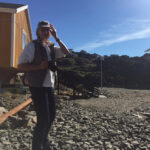
| Cookie | Duration | Description |
|---|---|---|
| cookielawinfo-checkbox-analytics | 11 months | This cookie is set by GDPR Cookie Consent plugin. The cookie is used to store the user consent for the cookies in the category "Analytics". |
| cookielawinfo-checkbox-functional | 11 months | The cookie is set by GDPR cookie consent to record the user consent for the cookies in the category "Functional". |
| cookielawinfo-checkbox-necessary | 11 months | This cookie is set by GDPR Cookie Consent plugin. The cookies is used to store the user consent for the cookies in the category "Necessary". |
| cookielawinfo-checkbox-others | 11 months | This cookie is set by GDPR Cookie Consent plugin. The cookie is used to store the user consent for the cookies in the category "Other. |
| cookielawinfo-checkbox-performance | 11 months | This cookie is set by GDPR Cookie Consent plugin. The cookie is used to store the user consent for the cookies in the category "Performance". |
| viewed_cookie_policy | 11 months | The cookie is set by the GDPR Cookie Consent plugin and is used to store whether or not user has consented to the use of cookies. It does not store any personal data. |
